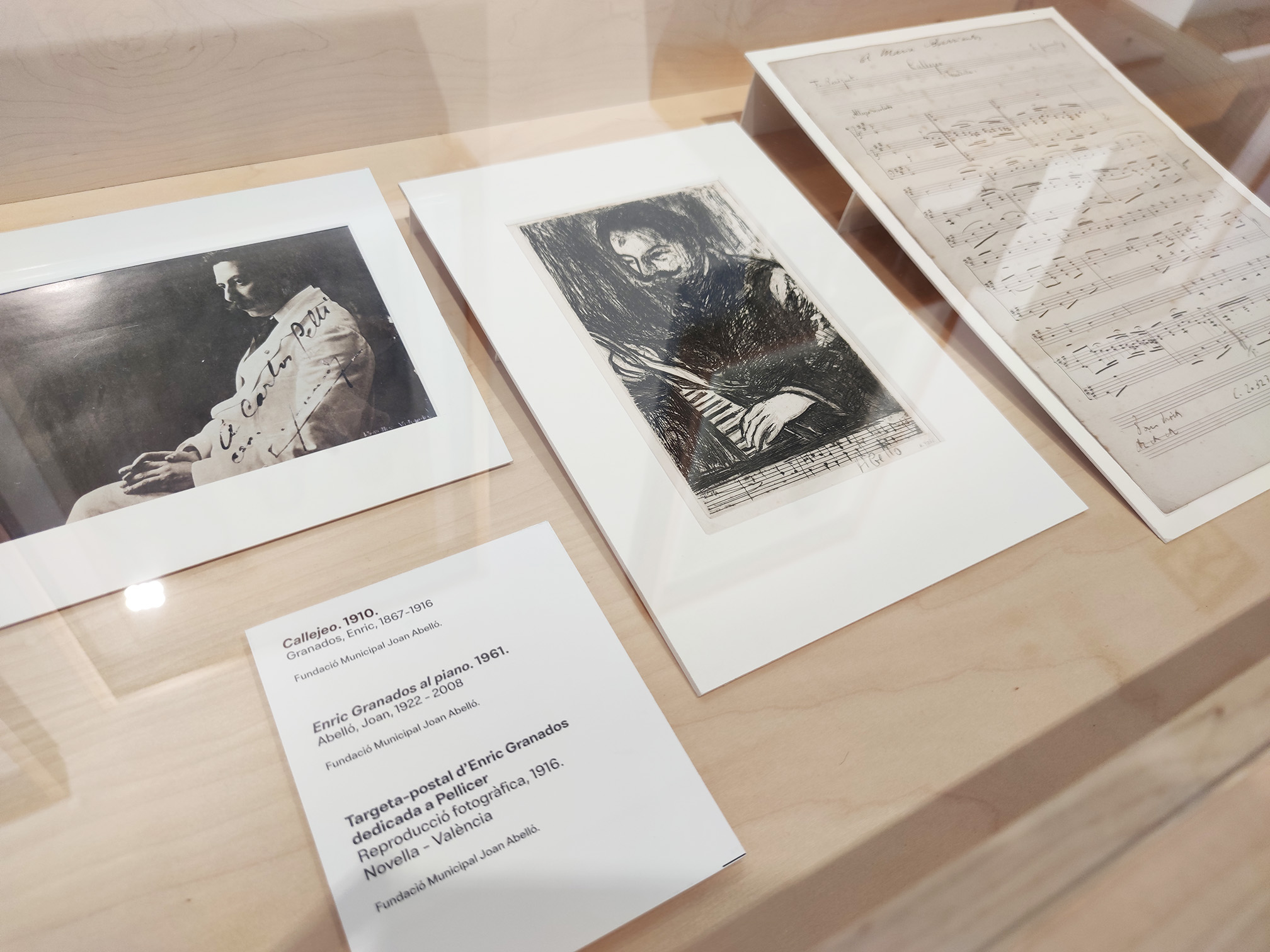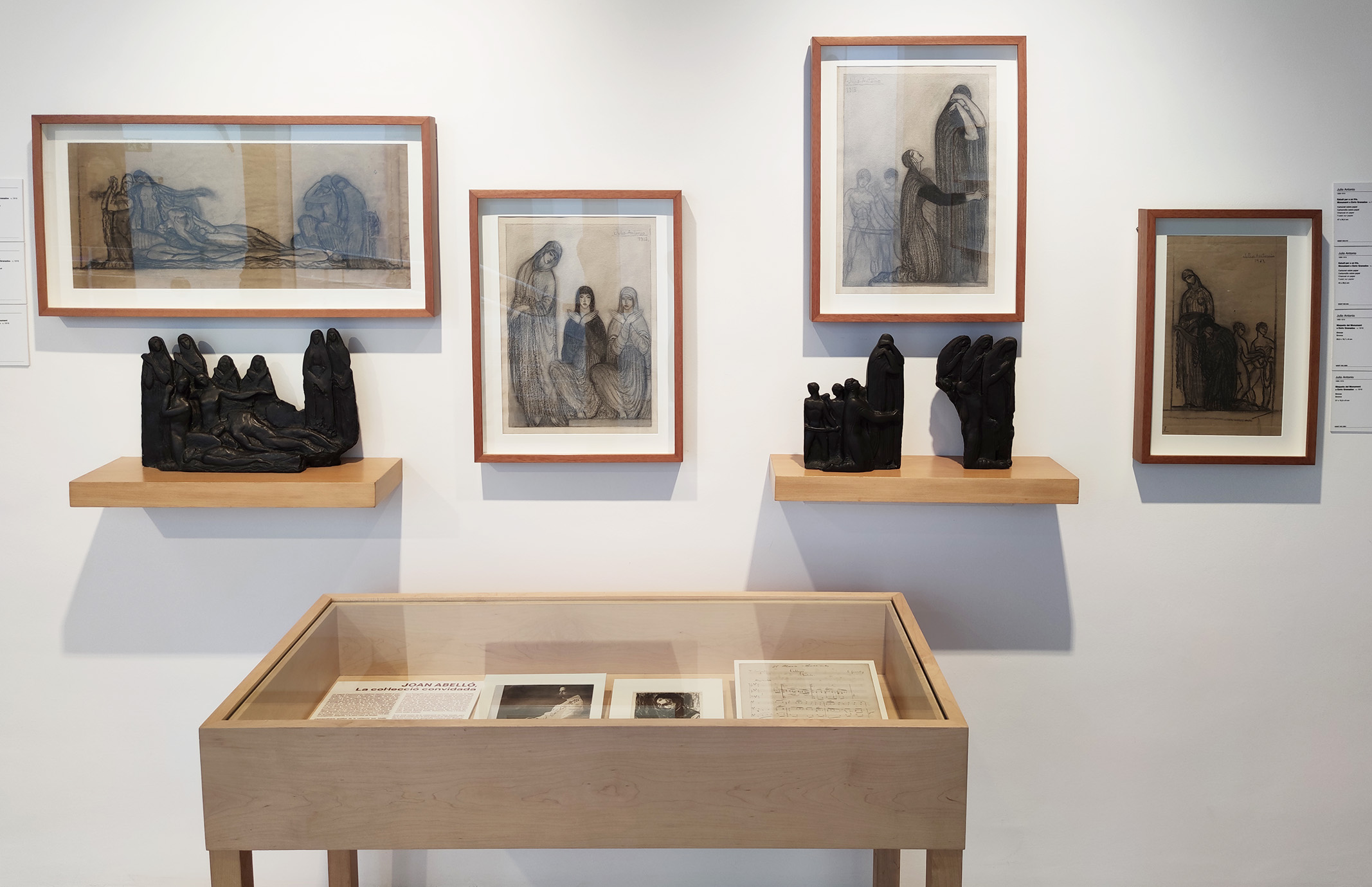
Exhibition Temporary
Joan Abelló, la col·lecció convidada
14/11/2023 - 25/02/2024
A series of exhibitions celebrate the centenary of the birth of the painter and collector Joan Abelló i Prat in 2023. Born in Mollet del Vallès, his beginnings as a painter were strongly marked by the fascination he felt for the work of Joaquim Mir and for the pictures he had painted during his stay in this locality. A little over twenty years old, Abelló went on to train in the workshop of Pere Pruna, to whom he was always grateful for his humanistic training. From his hand, on June 12, 1946, he passed through the doors of the house of the painter and collector Carles Pellicer, in Passeig de Gràcia in Barcelona. He would not part with it until Pellicer died, in 1959. Those years spent with him would forever mark his passion for collecting and his pleasure for social gatherings, a way of understanding and experiencing the art that project, then, at his house in Mollet.
The extraordinary quality of the collection that Abelló gave to his hometown can be regularly visited in his house-museum in Mollet and in the permanent rooms of the Abelló Museum. The collection is made up of more than 10,000 works, mainly of Catalan art from the 19th and 20th centuries, but also baroque carvings, clothing, furniture, glass, porcelain, Asian and African art, as well as a photographic background and a musical background of reference In 1996, Joan Abelló made a first donation to the municipality and, in 1999, the Abelló Museum was inaugurated. In 2001 he opened the Casa del Pintor to the public, a labyrinthine universe that explains his passions as a collector and painter, his artistic relationships and his love of travel. In 2006, Abelló completed the donation to the city of Mollet. In addition to bringing together one of the most remarkable collections of Modernism, from the artist Manolo Hugué and the Dau al Set group, its museum allows you to delve into the great names of Catalan art such as Dalí, Tàpies, Brossa, Picasso, Casas, Mir, Fortuny, Sorolla, Nonell, Rebull, Smith, Guinovart, Ponç or Cuixart, among many others.
Today, on the occasion of the Abelló Year, part of his collection and his painting are displayed in different parts of Catalan geography to dialogue with works from the collections of other museums. In each place, a complicity. A way to delve into the overflowing personality of Joan Abelló and the network of relationships he forged with artists of his time. To walk for his vocation as a painter and for his passion as a collector. Because without one we cannot understand the other.
Joan Abelló was 24 years old when she met the painter and collector Carles Pellicer, in the spring of 1946. He, 81. And he didn't leave him until he died, in January 1959. To Pellicer, and to everything he learned next to him, he wanted to dedicate the book L'hora del te. Published in 1961, Joan Abelló's poetic writing relives the weekly meetings that Pellicer had held in his flat on Passeig de Gràcia, number 4, in Barcelona, and which he was still able to celebrate. Through those rooms full of works of art and antiques, the great names of the Barcelona bourgeoisie and the world of art and show business had paraded in 1900. Enric Granados, his dear friend Apel·les Mestres or Maria Barrientos were especially loved by Pellicer. When he died, Joan Abelló inherited some works, furniture, costumes, objects and manuscripts that allow him to relive, together with L'hora del te, those weekly gatherings that the master had so evoked in him.
Of Enric Granados, the three original scores of Las tonadillas stand out, which Pellicer kept and which he wanted Abelló, a great lover of music, to have in the collection and in the museum he had already begun to dream about. These are El mirar de la maja, Callejeo and Amor y odio - this one composed in Pellicer's own studio - dedicated to Maria Barrientos. The manuscript that Gabriel Miró, his great friend, dedicated to him when the composer died is also preserved in the background: Los huérfanos de Granados. And in the important set of manuscripts of Apelles Mestres, the poems set to music by Enric Granados Picarol, Gaziel and Follet also stand out.
The admiration for Enric Granados, both on the part of Pellicer and Abelló, has, in the project of Julio Antonio, one of the beloved artists of the Museum of Art of Tarragona, the best of the scenarios to open a window to the collection from the Abelló Museum. Touched by the tragic death of the composer, Julio Antonio began work in 1918 on a monument to honor him. In collaboration with the draftsman Moya del Pino, he devised a monumental ensemble, of which some drawings and plaster casts have been preserved. He was working there when he died in February 1919.



